Trichomes – A Grower’s Guide to Harvesting Superior Weed
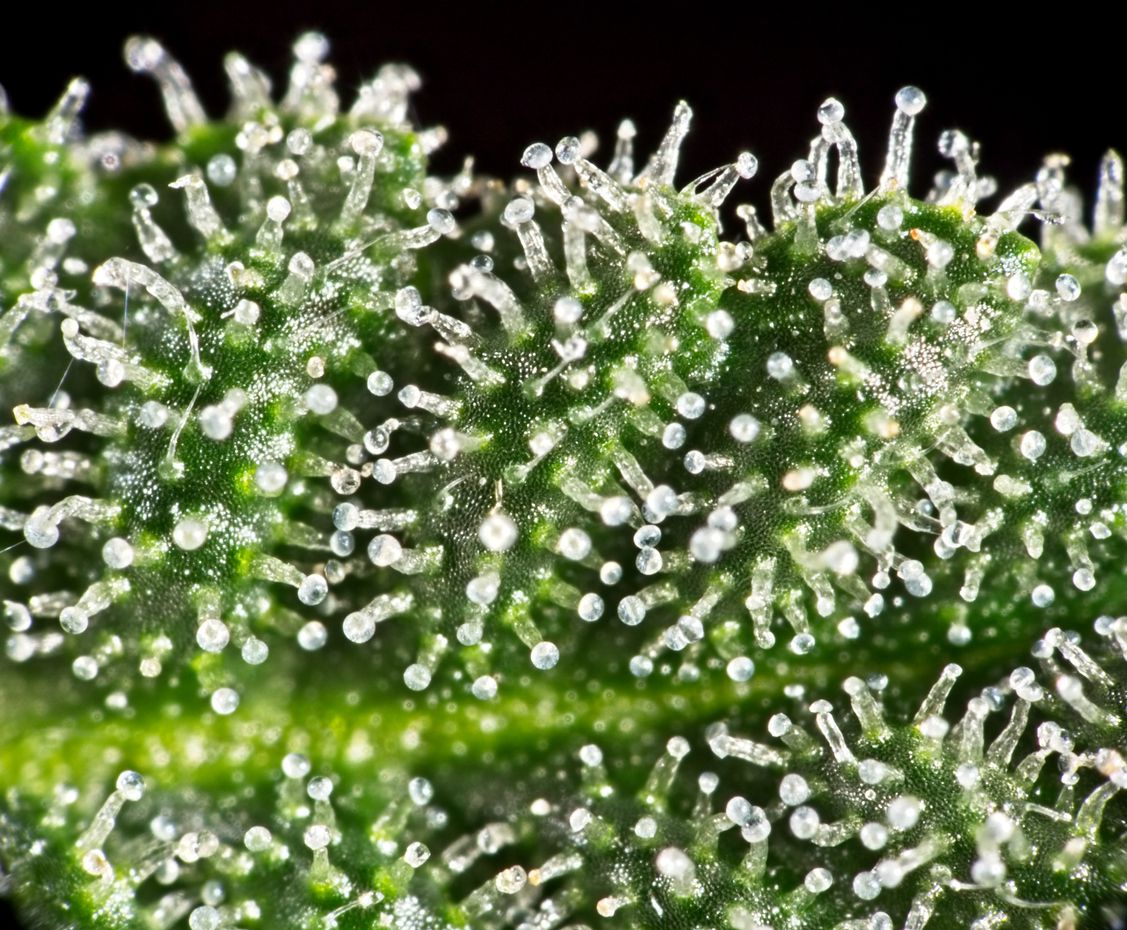
When using cannabis, several different chemical components are responsible for delivering the “high” that most users seek and one of them is Trichomes. Cannabis Trichomes are the almost microscopic hairs that are produced by marijuana plants and are responsible for creating most known flavors, terpenes, and cannabinoids that make every cannabis plant unique and effective.
Can you smoke trichomes?
Trichomes are an essential part of the cannabis plant, so they are always smoked when a consumer enjoys fresh buds. So yes, you can most definitely smoke cannabis trichomes, and you can also use them in a variety of other ways like making concentrates like oils or butter to make some incredible edibles, or through vaping.
Do trichomes get you high?
Trichomes themselves are not exactly the portion of the cannabis plant that produces the high, but they are responsible for holding the majority of the powerful cannabinoids like THC and CBD. So yes, trichomes will certainly get you stoned, but it’s what they house that creates the euphoric effects from cannabis.
Types of trichomes
There are 3 types of trichomes that are commonly found on the cannabis plant, including:
1. Capitate sessile trichomes
Capitate sessile trichomes are slightly larger than others, and one of the most abundantly found on a cannabis plant. These ones measure around 50-100 micrometers long and have both a stalk and head. This incredibly common trichome is likely one of the first you will spot when taking a good look at your plant, as they are mainly located in areas that are high in cannabinoids.
2. Bulbous trichomes
These trichomes represent the smallest group to appear on the entire cannabis plant, and they are almost invisible without the assistance of a microscope. They can appear anywhere on the outer surface of the cannabis plant and measure an incredibly small 10-15 micrometers long. Bulbous trichomes hold onto some cannabinoids, but since they are small, their capability is minimal.
3. Capitate-stalked trichomes
You can see these trichomes clearly with no more than the naked eye, unlike of all the previously mentioned trichomes. These ones are the epicenter for the synthesis of cannabinoids and terpenes.
What is the function of trichomes in plants?
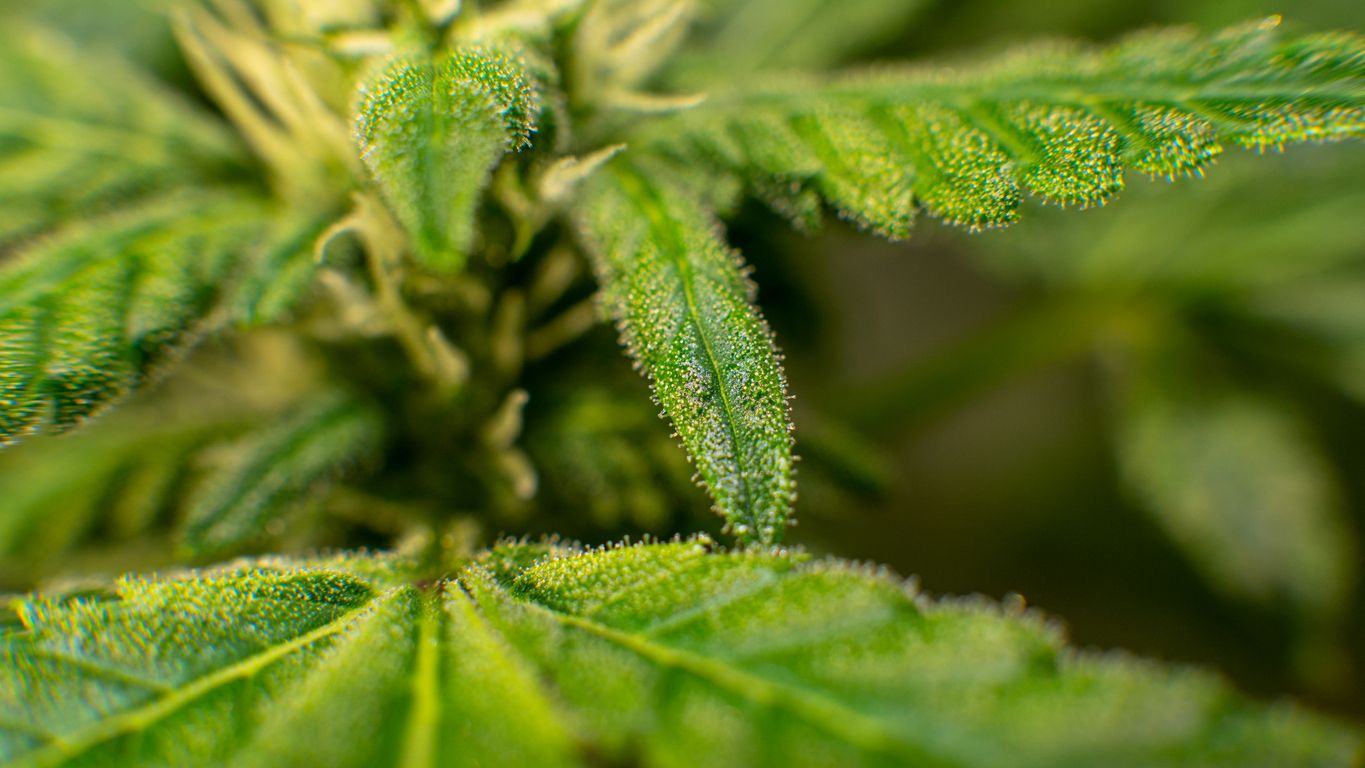
While your average grower likely knows that trichomes exist, how much they truly know about how they form, and why they exist is probably quite limited. Among stoners who don’t grow, Trichomes are almost never discussed even though they are the most significant contributor to the smell, taste, and effects of some of our favorite strains.
Trichomes exist because they are beneficial to the plants that they grow on. Trichomes protect the plants against predators, pathogens, and UV light rays by creating a protective barrier around the “fruit” of the plant. They are responsible for the strong, pungent smell weed is usually known for. To most pests, that smell represents trouble, and they avoid it. Trichomes are exclusively in cannabis and can also be found in other plants such as mint, pineapple, sea buckthorn, and Rhododendron.
How are trichomes an important part of kief and hash?
Cannabis enthusiasts who want to increase their exposure to trichomes should consider a kief or hash product. These two marijuana concentrates are created by harvesting only the heads of the trichomes, which is why they are generally some of the most potent cannabis products on the market today.
Kief

Kief is a concoction that looks like a fine powder, and it is often harvested using a multi-stage herb grinder that includes three or more pieces to separate them from the dry plant matter. This makes it easy to vape, smoke, or add to delicious cannabis goods like edibles, joints, or other concentrates.
Hash
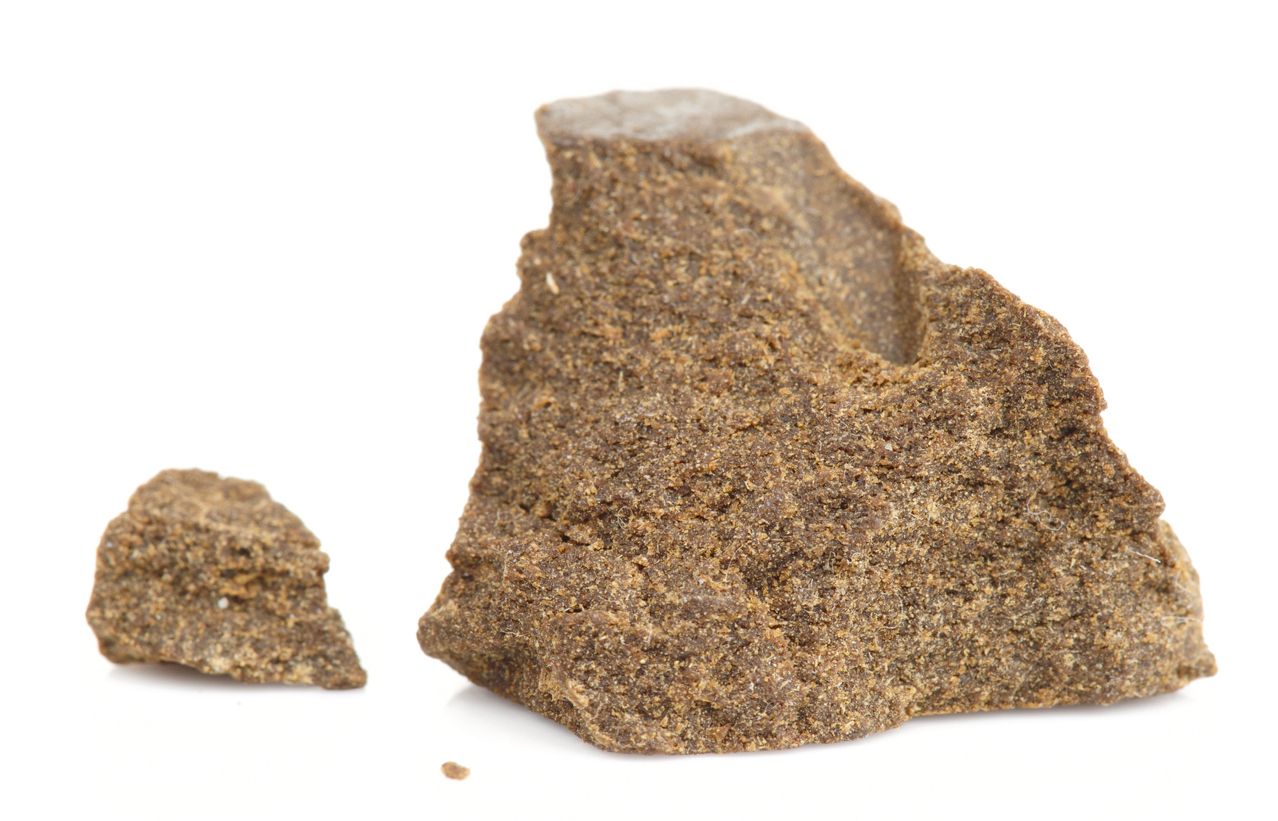
Hash is pretty much the same thing as kief, but only when it is made where the trichomes are placed under pressure and compressed into a chunk. This process is typically done using a screen to dry sift cannabis buds or leaves, or by separating the trichomes by hand through shaking or grinding. Hash is also very potent and perfect for vaping, smoking, or adding to beverages, edibles, or other concentrates for an extra-condensed hit.
Trichomes are generally found in the highest concentrations in cannabis bud flowers clinging to the smallest sugar leaves and giving the plant a white frosted look. That is why sugar leaves when trimmed away during the processing of cannabis buds, are often saved to make incredible concentrates.
What do trichomes look like when ready to harvest?
To do this, you will need a trichome microscope, If you are wondering which microscope to try, you can generally find one for under $20 that should do the trick. However, we suggest buying according to how you wish to use it. For beginners, something for only $20 may be sufficient. For growers looking to invest in a tool to help with yields, you may want to try a slightly higher quality one that sells for around $144.99 as they are often the best quality microscopes.
To know what to look for, you must understand that there are 4 different stages to trichome development.
Stage 1
The first is completely clear. If your trichomes are entirely transparent, then the plant hasn’t fully matured yet. You can still choose to go ahead and harvest a plant at this stage, but it will be at the lowest stage of potency.
Stage 2
The second stage is described as cloudy or milky. If a plant is harvested at this stage, the results will be the best of both worlds, both potent but still energetic.
Stage 3
The third stage is half amber and half cloudy. The effects of the third stage are considered to be intense, but not quite melt you to your couch material.
Stage 4
The fourth stage is the amber stage. Harvesting a plant when the trichomes appear an amber or orange-yellow color will be the most active stage. Once you see this one, your plant is as mature as it will get. The effects of the amber stage are the most intense and pleasure-inducing of the four stages.
Just remember that stronger isn't always better. Some people do prefer a lighter, more energetic buzz.
How to get more trichomes on your plants
The maturity of these trichomes is observed by the changing opacity of the trichome. It will change from the opaque color to cloudy trichomes and later will take on an amber hue. This transition in color will indicate the ripeness of the plant, which will be the visual sign for harvest. All plants will show their maturation. Differently, the standard remains in the observation of the changing of colors to represent the time for harvesting the wonderful plant.
If you want to ensure a bumper trichome crop, there are a few procedures that will enhance the trichomes on your plant:
-
Monitor the amount of light. Cannabis plants create more trichomes to protect itself from damaging ultra-violet rays. If you supplement UV-B lights, you will increase the production of trichomes
-
Nutrient additives will aid in the production of the trichomes also. Terpene enhancers will trigger the plant's defense system. Using a trichome booster will increase the production of essential oils.
-
Potassium silicate is used to provide a stronger resistance to pathogens because it will boost the resilience of the plant's flowers and trichomes. The finished product will be more potent and perhaps have a longer shelf life with the addition of potassium silicate.
-
Do not harvest your cannabis plants until they are 100% mature, as the trichome development happens with age, so there will be more as the plant reaches the end of its lifespan.
-
Grow the right strains. Some types of weed are just better at producing large numbers of trichomes, so if you want some, then it’s best to check out the best strains for the challenge. Many of which you can find listed at the end of this article.
The use of terpenoid enhancement products during the flowering stage of the growth of your cannabis plant can boost the production of trichomes in the plant. This application should enhance the potency of the particular strain of cannabis that they treat.
Trichomes are a valuable part of the cannabis plant. Learning more about the wonderful attributes that these entities provide can only increase our appreciation for the magnificent plant we call cannabis. Take your time to look at the function of your trichomes and respect them.
How to harvest cannabis trichomes
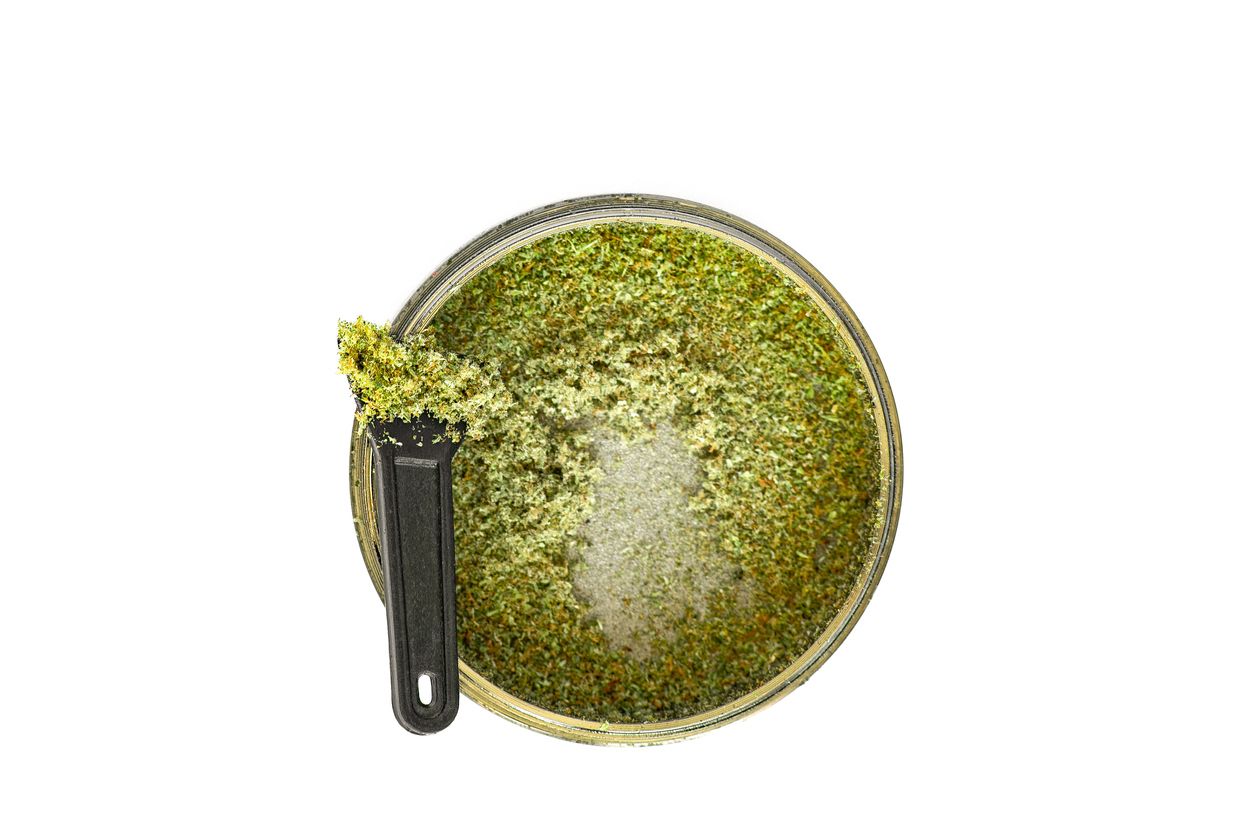
If you want to know how to make kief or hash yourself, then a good place to start is trichome harvesting. Other cannabis concentrates can often require harsh chemicals or high temperatures that can be risky to deal with, but harvesting trichomes is easy to do, completely safe, and solvent-free. You just need to have a couple of tools on hand before you start.
Tools / Materials
- Clean working surface
- Silk screens or sift boxes
- Dry cannabis buds or leaves
- Credit card or other scraping tools
- Gloves
Instructions
-
It is important to begin with a sanitized workstation, which means a clean working surface and screens, so check both and ensure to remove any particles or contaminants from the area and tools.
-
Put on a pair of gloves and toss the cannabis buds or leaves onto the boxes or screen. Be sure to add enough to fill as much of the surface as possible, as the additional pressure helps to knock the trichomes loose, but you also want to avoid stacked plant materials. You will also want as much of the cannabis as you can to be directly in contact with the screen.
-
Gently move the boxes or screen from side to side and use your fingers to agitate the cannabis mixture.
-
Now it’s time to collect the rich trichomes that have gathered in the box or directly on the clean surface. This is the very first run, and it will be the most potent. At this point, you can repeat the steps until you are satisfied with your haul, or you no longer see trichomes gathering.
Cannabis strains with the most trichomes
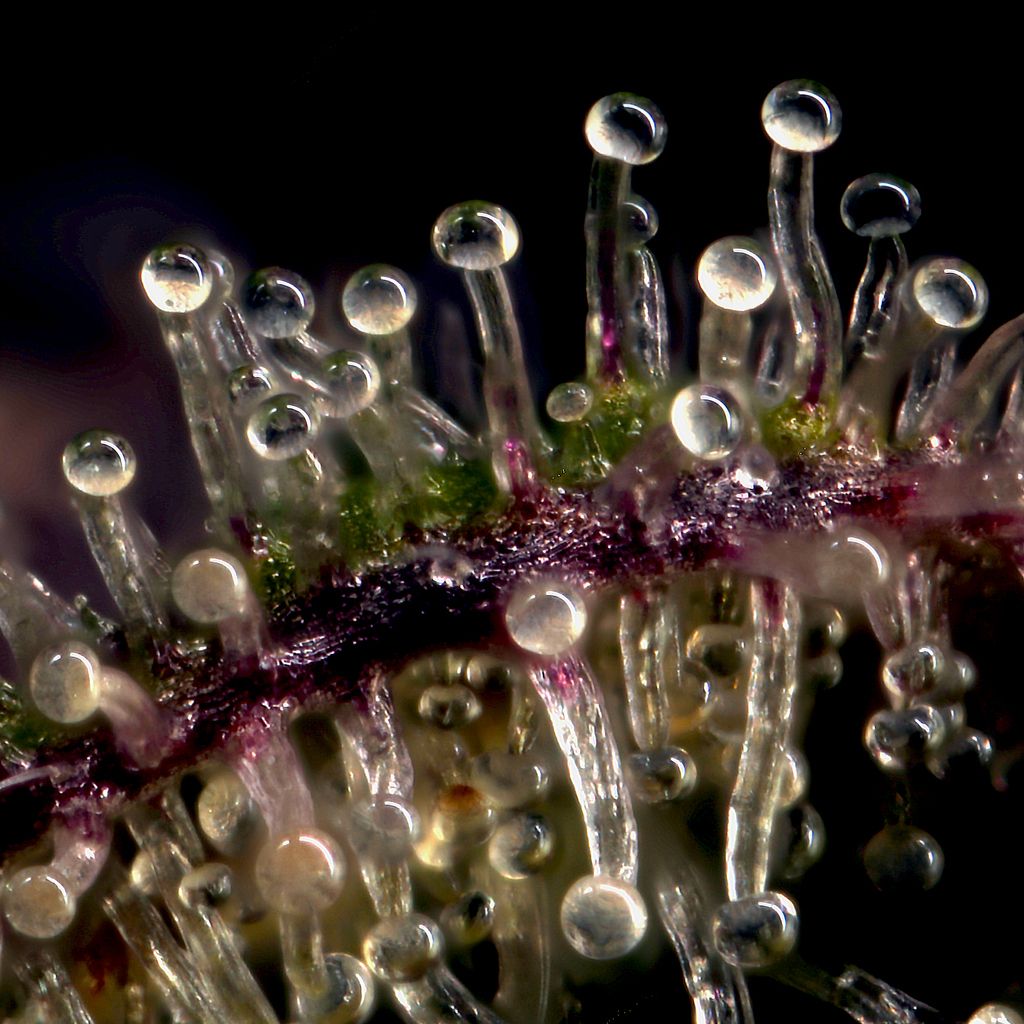
So which strains have the most trichomes? To understand the answer to this question, you will need to delve a little deeper into just how trichomes are produced. Genetics play a big part in the level of trichomes grown by each plant.
Other factors, such as the amount of light, watering, nutrients, and overall health of the cannabis plant, will heavily affect each plant yield as well. Though trichomes are not necessarily a good predictor of a plant’s potency, they can certainly help make not only the look but also the effects of your plant more appealing.
The best way to compare different buds and their trichomes are under a THC microscope, as most of them are far too small to see with the human eye. If you are looking for somewhere to get started, then you might want to grab one of these fantastic marijuana strains that are known for producing some of the largest trichomes that are sure to be fun to look at under a high-quality microscope:
- White Widow
- Chemo
- The White
- Ghost Train Haze
- Purple Urkle
- Blue Dream
- Crystal Coma
- Gold Leaf
- Crimson Sky
- Blue Coma

